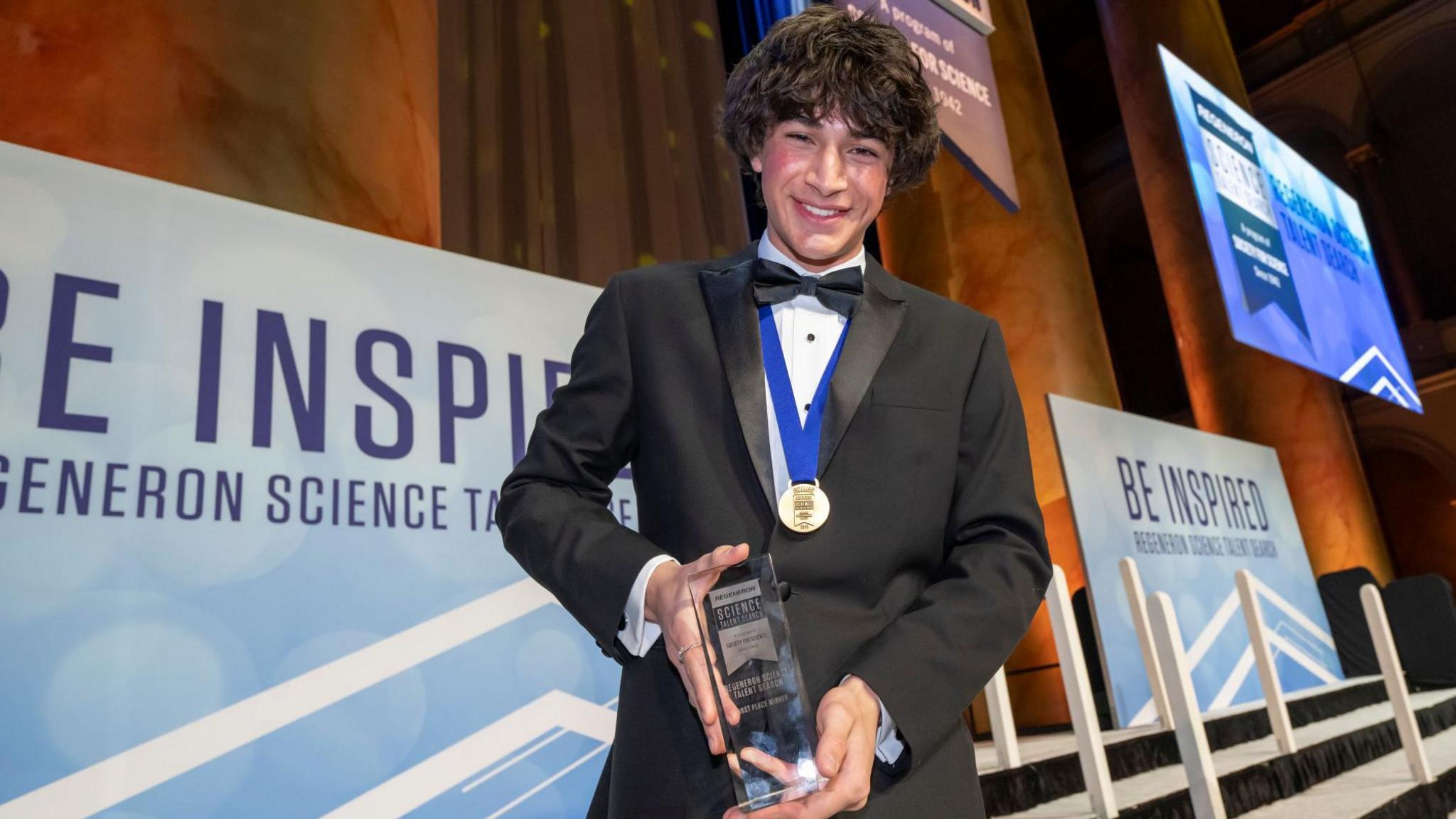Teenager wins huge cash prize in science competition

US high-school student Matteo has been working with a mentor at Caltech University in his home town of Pasedena, California.
- Published
An 18-year-old from California, in the US, has won a $250,000 prize (about £188,000) at a prestigious science and mathematics competition for teenagers.
Matteo Paz created a powerful AI tool which helped him discover 1.5 million previously unknown variable stars.
A variable star is a term used to describe ever-changing astronomical objects such as super massive black holes, volatile newborn stars and supernovas.
Matteo's discoveries are thought to be ground-breaking for science and the AI algorithm he created can be used by astronomers all over the world to help make further discoveries.

Matteo has loved astronomy from a young age and was pretty shocked to pick up the top prize at the 2025 Regeneron Science Talent Search
Matteo says he has loved astronomy since he was little and exploring the universe is something he is passionate about.
"To be able to contribute in a big way is really special to me," he said after winning the Regeneron Science Talent Search, a national competition run by the US Society for Science.
"I just feel incredibly blessed," he added.
"If I could give one piece of advice to young people with ambition - just start it. You are never going to know before you start where you could go.
"Your first step will lead you to your next and that's how you do great things in life."
So, what is he going to spend his winnings on?
Well, Matteo will probably be quite sensible with it as in his spare time, he runs a project which helps teach school-age children about financial basics and money literacy.
Not only that, but he loves music and even owns a concert promotion business.
What did Matteo's work help discover?

An artists impression of Nasa's WISE telescope
Matteo studied information from Nasa's Wide-field Infrared Survey Explorer (WISE) mission.
The project launched in 2009 and has been scanning the skies for astronomical bodies ever since.
When the infrared telescope discovers a change in light, it pinpoints an interesting astronomical object such as a black hole or another galaxy.
With over 15 years worth of data from the WISE telescope, Matteo knew studying the whole lot manually would take way too long, so he came up with an AI algorithm to search the data for new anomalies.
His work helped him catalogue 1.9 million objects, over 1.5 million of which are potential new, undiscovered objects.
